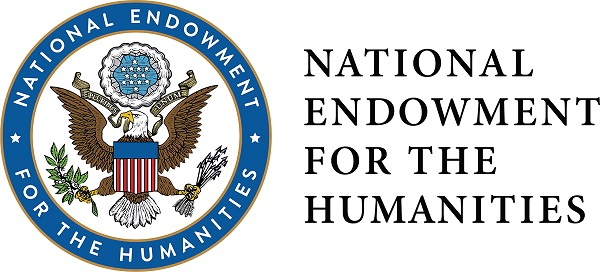
US Government Documents related to Indigenous Nations
Files
Download Full Text (540 KB)
Description
This treaty, signed on September 17, 1851, was an essential agreement between the United States government and representatives of the Lakota, Dakota, Cheyenne, Arapaho, Crow, Assiniboine, Mandan, Hidatsa, and Arikara Nations. In this treaty, the United States acknowledged that the area surveyed by the treaty was Indigenous land and recognized each nation's exclusive territorial rights over a portion defined by geographical boundaries. Equally, the tribes agreed that the US government had the right to establish roads and posts—military and other—within their territories. They also promised to abstain from hostilities against other tribes, pay for any wrongs committed by their people, allow for the safe passage of travelers, surveyors, and workers through their land, and select head-chiefs to represent them in all their dealing with the US government. In return, the United States guaranteed it would protect the Indigenous Nations from American citizens and make annual annuities for fifty years. Before ratifying this treaty on May 24, 1852, Congress amended the term of annuities from fifty to ten years. This treaty is also known as the Horse Creek Treaty of 1851 and the Treaty of Fort Laramie, 1851.
Publication Date
9-17-1851
Keywords
Grand Council, Treaty, Horse Creek Treaty, the Horse Creek Council Treaty of 1851, Fort Laramie, Indian Territory, ratification, Indian affairs, Indian nations, Indians on the Upper Missouri, Santa Fe Trail, The Great Council, sovereign, head chiefs, annuities, Sioux, Dakota, Sioux or Dahacotahs, Sioux or Dahcotah Nation, Assiniboine, Assiniboin, Assiniboines, Gros Ventre Mandans and Arrickaras Nations, Gro-Ventre, Grosventre, Hidatsa, Mandan, Mandans, Nueta, Arikara, Arrickarees, Arikara, Sahnish, Blackfoot Nation, Blackfoot, Blackfeet, Crow Nation, Crows, Cheyennes, Cheyenne, Cheyeenes and Arrapahoes, Arapaho, Arrapahoes
Geographic Subjects
Black Hills, White Earth River, Missouri River, Platte River, Red Bute, Heart River, Yellowstone River, Powder River, Little Missouri River, Muscle-shell River, Big Dry Creek, Rocky Mountains, Twenty-five Yard Creek, Wind River Mountains, Arkansas River, Santa Fe Road, New Mexico, Texas.
Organizations Referenced
Indian Affairs, US Army, Mandan Hidatsa and Arikara Nation, the Three Affiliated Tribes of Fort Berthold, Mandan, Nueta, Hidatsa, Gros Ventre, Gros-Ventre, Minnetaree, Arickara, Arikara, Sahnish, Arrickaras, Ricarees, Ree, Gros Ventre, Mandans, and Arrickaras Nations,The Great Sioux Nation, Lakota Nation, Dakota Nation, The Seven Council Fires, Oceti Sakowin, Očhéthi Šakówiŋ, Oceti Ŝakowiŋ, Lakota, Lakȟóta, Lakhóta, Teton, Tetonwan, Thĺtȟuŋwaŋ, Brulé, Sičháŋǧu, Sicangu, Burned Thighs, Kul Wicasa Oyate, Heyata Wiscasa Oyate, Oglala, Oglála, Sans Arc, Itázipčho, Blackfeet, Sihasapa, Sihásapa, Hunkpapa, Húŋkpapȟa, Miniconjou, Mnikȟówožu, Two Kettles, Oóhenuŋpa, Dakota, Western Dakota, Wičhíyena,Yankton, Ihaŋktoŋwaŋ, Iháŋktȟuŋwaŋ, Yanktonai, Ihaŋktoŋwaŋna, Iháŋktȟuŋwaŋna, Cheyenne Nation, Tsétsęhéstâhese ,Tsitsistas, Tsis tsis’tas, Tse-TSES-tas, Northern Cheyenne, Notameohmésęhese, Southern Cheyenne, Heévâhetaneo'o, Heévâhetane, Arapaho, Northern Arapaho, Southern Arapaho, Hinono’ei, Hetanevo’e, Crow Nation, Crow Tribe of Indians, Crow Tribe, Apsáalooke, Apsaalooke Nation, Apsaalooké, the Mountain Crow, the River Crow, and the Kicked in the Bellies, Assiniboine Nation, Assiniboine, Nakota Oyadebi, Nakota, Nakona, Nakonabi, Blackfeet Nation, Aapátohsipikáni, Southern Piikani, Blackfoot Confederacy, Niitsĺtapi, Peigan
People Referenced
DD. Mitchell, David D. Mitchell, Thomas Fitzpatrick, Mah-toe-wha-you-whey, Conquering Bear, Matȟó Wayúhi, Mah-kah-toe-zah-zah, Makatozaza, Clear Blue Earth, Bel-o-ton-kah-tan-ga, Blotahunka Tanka, Blotanhunka Tonka, Grand Partisan, Big War Leader, Nah-ka-pah-gi-gi, Yellow Ears, Mak-toe-sah-bi-chis, Mato Sabi Ceya, Smutty Bear, Meh-wha-tah-ni-hans-kah, Miwátani Háŋska, Ma-wá-tań-na-hań-ska, Long Mandan, Tall Mandan, Wah-ha-nis-satta, Medicine Arrows, Rock Forehead, Stone Forehead, He Who Walks With His Toes Turned Out, Voist-ti-toe-vetz, Vois-ti-toe-vitz, White Cow, Nahk-ko-me-ien, Bear's Feather, Bark, Koh-kah-y-wh-cum-est, White Antelope, White Crow, Bé-ah-té-a-qui-sah, Beah-at-sah-ah-tch-che, Little Owl, Neb-ni-bah-she-it, Big Man, Beh-kah-jay-beth-sah-es, Cut Nose, Arra-tu-ri-sash, Big Robber, Big Shadow, Big Robert, Doh-chept-she-chi-es, Daxpitcheehísshish, Red Bear, Sits on Edge of Fortification, Mah-toe-wit-ko, Man-to-was-ko, Crazy Bear, Toe-tah-ki-eh-nan, The First Who Flies, Nochk-pit-shi-toe-pish, Four Bears, She-oh-mant-ho, White Wolf, Koun-hei-ti-shan, Iron Bear, Bi-atch-tah-wetch, Young Eagle Chosen, Adam B. Chambers, A.B. Chambers, Samuel Cooper, S. Cooper, Robert H. Chilton, R.H. Chilton, Thomas Duncan, Thomas G. Rhett, Thos. G. Rhett, Washington L. Elliott, W.L. Elliott, C. Campbell, Joh S. Smith, Robert Meldrum, H. Culbertson, Francois L’Etalie, John Pizelle, Benjamin Gratz Brown, B. Gratz Brown, Robert Campbell, Edmond F. Chouteau
Disciplines
American Politics | Indigenous, Indian, and Aboriginal Law | Indigenous Studies | Law and Politics | Military History | Native American Studies | Political History | United States History
Recommended Citation
Treaty of Fort Laramie with the Sioux, Etc., 1851. September 17, 1851. US Government Documents Related to Indigenous Nations, University of North Dakota. https://commons.und.edu/indigenous-gov-docs/16/.

Included in
American Politics Commons, Indigenous, Indian, and Aboriginal Law Commons, Indigenous Studies Commons, Law and Politics Commons, Military History Commons, Native American Studies Commons, Political History Commons, United States History Commons
Cultural Institutions Notice

Attribution Incomplete
Collections and items in our institution have incomplete, inaccurate, and/or missing attribution. We are using this notice to clearly identify this material so that it can be updated, or corrected by communities of origin. Our institution is committed to collaboration and partnerships to address this problem of incorrect or missing attribution.

Open to Collaborate
Our institution is committed to the development of new modes of collaboration, engagement, and partnership for the care and stewardship of past and future heritage collections.

